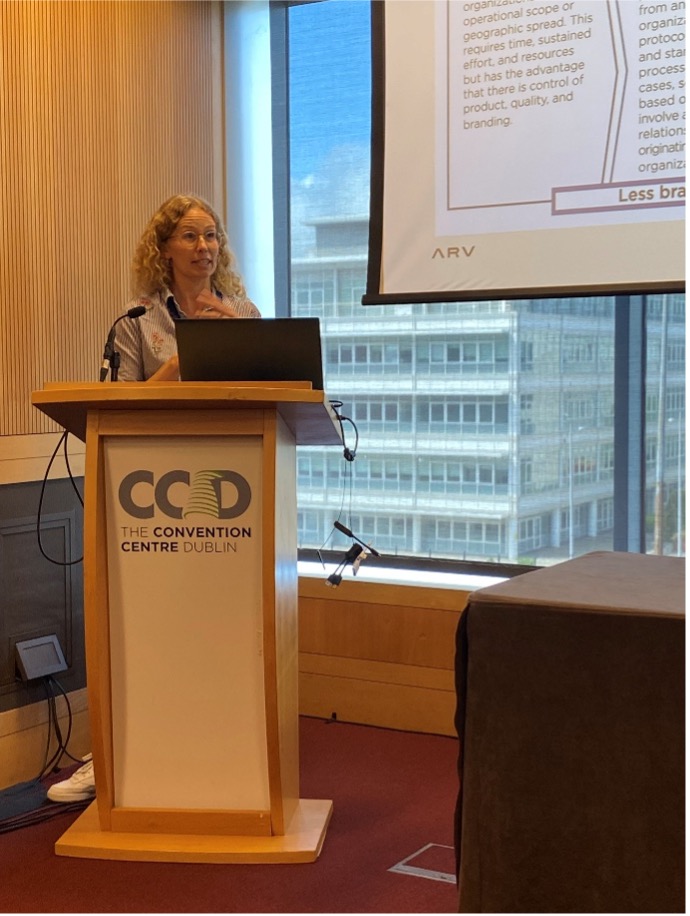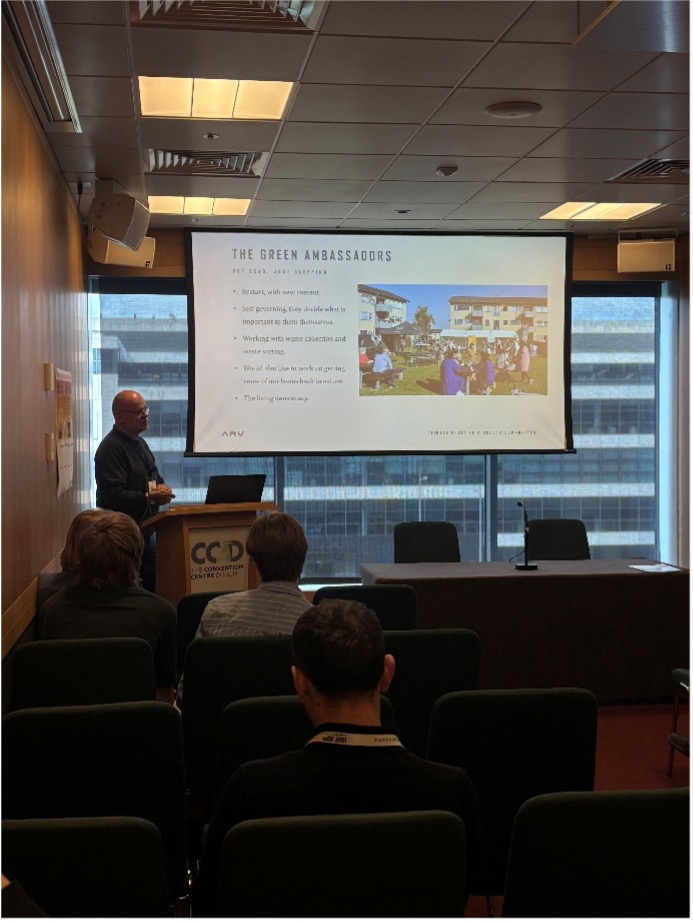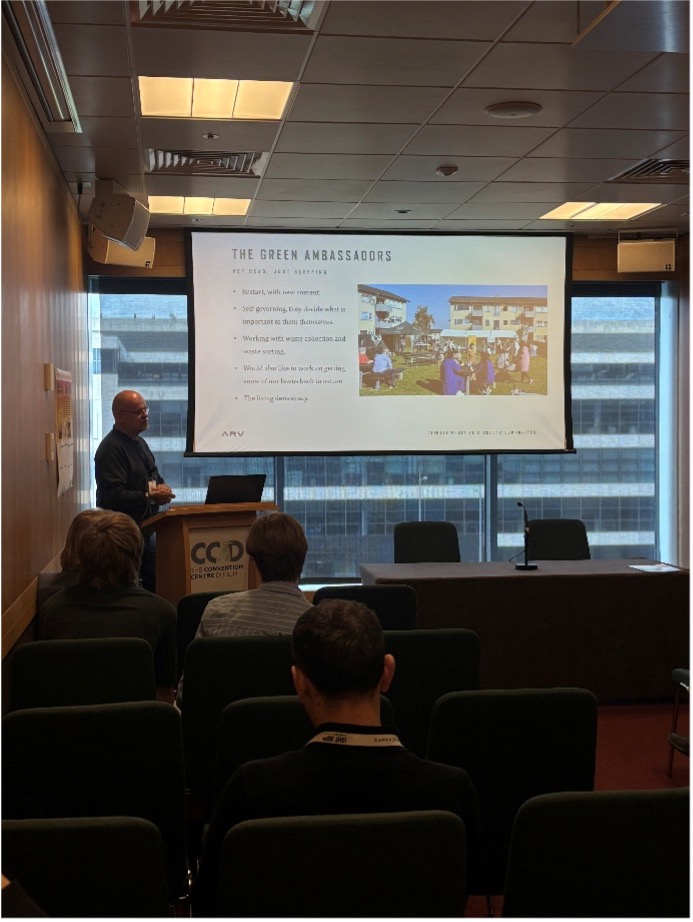Who are We?
As the climate crisis accelerates and the built environment is need of a major upgrade, a growing movement across Europe is demonstrating that the answers may lie in a powerful fusion of community, circularity, and district-level interventions. At the 2025 International Social Housing Festival in Dublin, a spotlight was cast on this emerging transformation during the session “Spreading Climate Positive Circular Communities Around Europe”, focusing on the upscaling potential of ready-made solutions that significantly speed-up deep energy renovation and the roll-out of circular and net zero-emission buildings and neighbourhoods.
Held on June 5th at the Convention Centre Dublin, the session convened experts and housing practitioners to explore how Climate Positive Circular Communities (CPCCs) are being piloted and scaled across the continent — and how others might follow suit.
The session was organised thanks to the EU-funded project ARV, aiming to boost the building renovation rate in Europe, a set of innovative services, products and knowledge to plan, design and deliver circular district renovation have been demonstrated in real-life projects across Europe. These are now publicly available on the e-marketplace and a set of blueprints, ready to be replicated.
Rethinking social housing renovation with the community
Opening the session, Clara Mafé from Housing Europe introduced the overarching ambition of the EU-funded ARV project: to demonstrate how integrated district-level approaches to housing renovation can not only reduce carbon emissions but also revitalize neighbourhoods and empower residents. Through a mix of demonstration projects and community engagement across six countries, CPCCs are reimagining what it means to renovate with social purpose.
In Utrecht (NL), the social housing provider Woonin collaborated with a network of local support agencies in Utrecht such as translation support to tenants for administrative processes; a local government agency giving financial, educational and job seeking advice; and a community center organising activities for residents. An ‘energy coaching programme’ was also developed to empower citizens to lower their energy consumption.
A physical hub in the district to engage residents in the energy transition for training and coaching events in the circular pavilion at “Panini Fresco” – a small sandwich shop made from pieces coming from renovated buildings.
Yet, even as momentum builds, key challenges persist. These include a lack of supply chains for circular materials, difficulties in making innovative models visible and replicable, and navigating regulatory or financial barriers that hinder long-term investment.
Scaling Up Pathways for Innovation: from expansion to replication and collaboration
Jannika Aalto from Green Digital Finance Alliance (GDFA) tackled the pressing question: How do we scale the impact of CPCCs?
Success might lay on the ability to adapt local innovations into scalable, flexible models that can travel across geographies while respecting contextual differences. This involves not only replicating technologies or processes but embedding new business models and financing solutions that underpin them.
Some of the most promising scalability pathways include:
Sønderborg, Denmark: A Living Lab for Climate Positive Circular Community
The centerpiece of the session was a deep dive into the CPCC pilot in Sønderborg, Denmark, presented by Torben Esbensen and Torben Leth from the social housing company SAB (Sønderborg Housing Association). The project offers a tangible example of how deep renovation and smart technologies can blend with tenant empowerment to deliver real climate benefits.
Managed by a non-profit housing association grounded in democratic governance and stable finance, the Sønderborg model ensures residents play a direct role in decision-making. This structure, they argue, is a key enabler of trust, transparency, and long-term buy-in.
Technical and Social Innovations
On the technical front, Sønderborg has introduced a suite of climate-positive upgrades:
But the project doesn’t stop at technology. The team launched social interventions like the Brunata app providing tenants’ insights of their consumption patterns, personalised energy-use letters on
how to use the thermostats, community meetings, and tenant festivals— all aimed at nudging residents toward more sustainable habits.
The results? Promising, but mixed. While 36% reductions in electricity bills and measurable efficiency gains were achieved, Esbensen noted that behavioral change remains one of the toughest nuts to crack. Residents who change their energy behaviour are often those who are already have responsible consumption patterns.
What could be effective is the central control of heating—setting the temperature in each room without allowing residents to adjust. This approach includes centralised management of both heating and ventilation systems. However, it presents a democratic dilemma: should control be removed from the residents altogether?
A major breakthrough in Sønderborg came through innovative financing models that allowed for climate upgrades without raising rents. By partnering with third parties through power-purchase agreements (PPAs) and ESCO-style models, the housing association was able to invest in solar infrastructure while ensuring long-term affordability.
The project also calculated clear payback periods for key interventions — for example, smart thermostats (6 years) and PV+battery systems (11 years) — building a case for replication in other low-income or social housing contexts.
What’s Next?
The session concluded with an interactive exercise, encouraging participants to reflect on how the CPCC model might be applied in their own cities or regions.
As Europe strives to meet its climate goals and ensure a just transition, initiatives like CPCC are lighting the way forward. They show that sustainability is not a luxury reserved for the wealthy — it can, and must, be built into the very fabric of affordable housing.




Subscribe to our Newsletter
Want to know more about the new generation of climate positive circular communities (CPCC)? Sign up to our bi-annual newsletter (no spam guaranteed)!